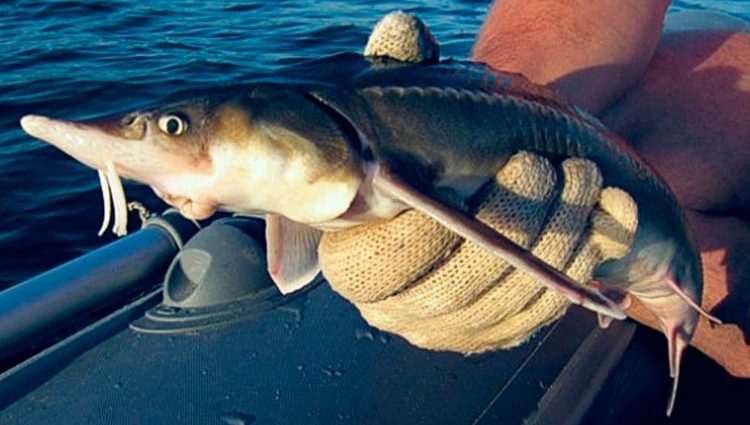Mataupu
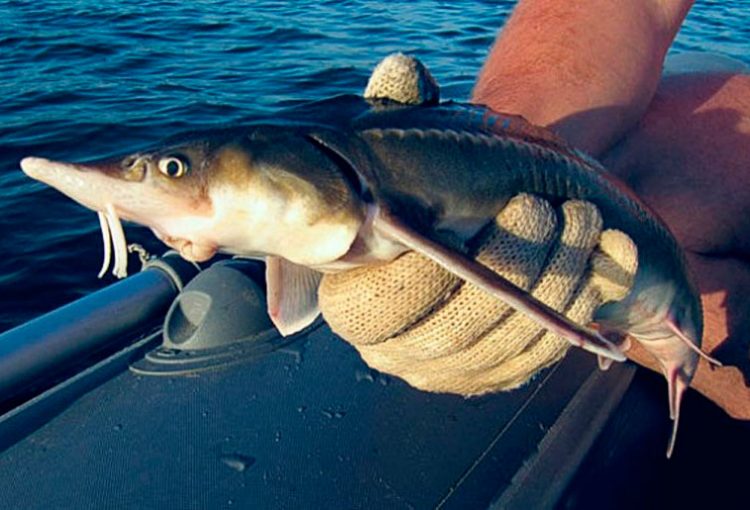
Sterlet belongs to the category of fish that have excellent taste, so it is important for every angler to catch a tasty fish. Unfortunately, in our time it is necessary to possess not only knowledge and skills in the organization of fishing, but also to learn the laws that regulate the process of fishing.
In various regions of Russia, catching this fish is strictly regulated by law. At the same time, it is necessary to know how and with what to catch sterlet, as well as to know how to do it legally.
Where is the sterlet caught?
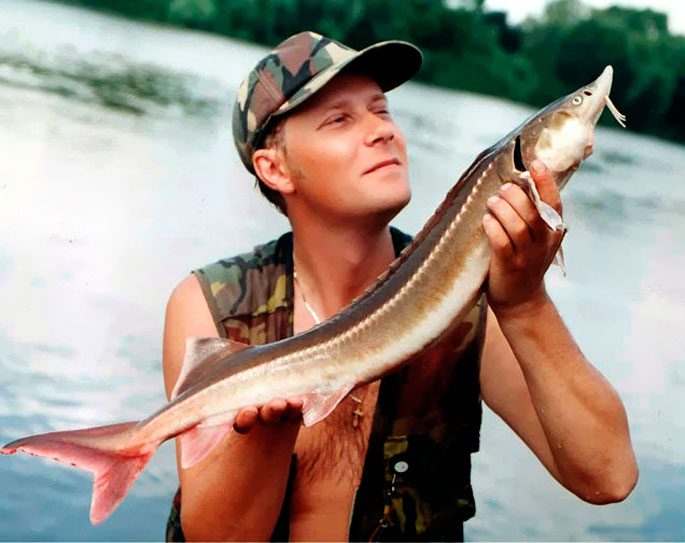
Not so long ago, in the rivers of the Urals and Siberia there was a sufficient amount of sterlet, but in our time this fish is listed in the Red Book. Therefore, there are certain fishing rules: in case of catching a sterlet, it must be carefully removed from the hook and released into the water. If the inspectors are lucky enough to find a sterlet among the catch, then for each individual they will have to pay 12 thousand rubles a fine. If fishing was carried out with the help of poaching nets, then the problems can be much more serious. So you shouldn’t take that risk.
True, there is a legal way to get this fish, it is enough to buy a license for the right to catch this fish. Such a permit costs about 500-1000 rubles per day, depending on the region. Moreover, it should be taken into account that the presence of a license does not allow for uncontrolled fishing. For three days it is allowed to catch only 10 individuals, and of a certain size.
It is also worth recalling that this is not possible in all regions. In this regard, when going fishing, you should ask the relevant authorities about the rules for catching sterlet. For example, catching this fish on the Ob River is generally prohibited, so there can be no question of a license, since the number of sterlet on this river is quite small. Despite this fact, sterlet can be caught on paid reservoirs in the Novosibirsk region and in the Altai Mountains.
There are not so many regions in Russia where the sterlet is under the special control of Rybnadzor. There are places where the sterlet population is quite numerous today. For example, in the Oka River there is plenty of it to catch with a license, which is not so expensive. Here it is bred artificially, with funds received from the sale of licenses.
Sterlet diet
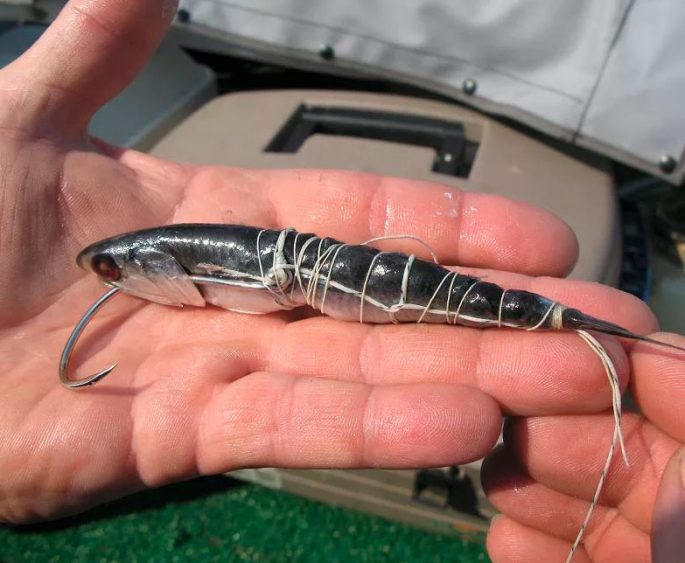
The basis of the diet of this fish is made up of small living organisms, in the form of mayflies, caddisflies, all kinds of small crustaceans, mosquitoes, worms, etc. Therefore, it is considered:
- That the sterlet is an omnivorous fish. Although it is more actively caught on baits of animal origin.
- That the diet largely depends on the age of the individuals: younger individuals prefer to eat small food items, while older individuals prefer worms. In various reservoirs, where there are a lot of mayflies, the basis of the sterlet’s diet consists of this insect.
- That the taste preferences of fish also depend on the time of year, therefore, at the beginning of summer, smaller food objects enter the diet of fish, and fish take larger baits closer to autumn. This is due to the fact that the fish tries to stock up on useful substances for the winter.
- That the best bait, according to anglers, is the dendroben worm, and the larger the worm, the larger the fish you can catch.
sterlet tele. Taumafai e pu'e se tasi. Pu'eina sterlet i luga o asini. Faiga fagota.
vaitau fagota
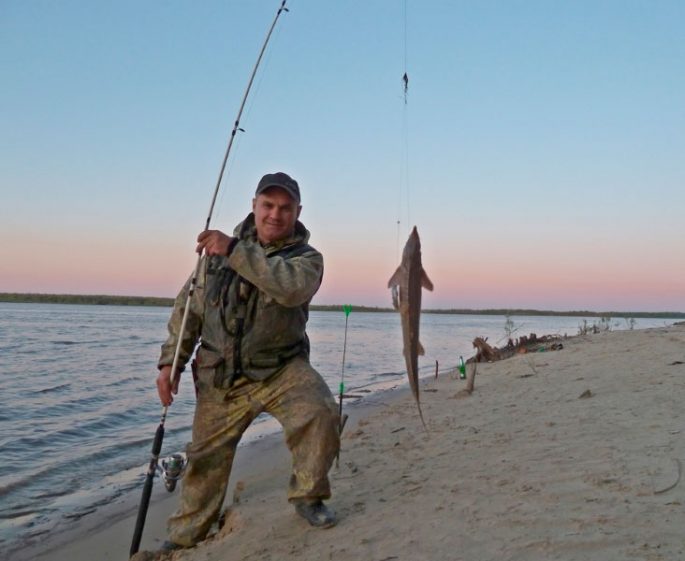
Catching this fish is allowed in almost all regions, with a few exceptions. Nowadays, quite a lot of ways to catch fish have been invented, but despite this, it can only be caught with a float rod or bottom gear. These are fairly simple gear, so every angler is able to catch this royal fish, which will be discussed further in the article.
As soon as the fish spawn, they immediately begin to issue licenses. After spawning, the fish tries to stay in shallow water, where it is much easier to get food in order to restore strength and energy.
Nowadays, it is much easier to determine promising places, armed with an echo sounder. If not, then you can use a marker rod. As a rule, promising places are located in areas where the pit begins to turn into a shallow. At the beginning of the summer season, after spawning, the fish are quite hungry, so they bite both day and night.
After the fish is satiated, it tries to go to the depth, which is its usual habitat. Such areas of the water area may be located far from the coast. In addition, the fish becomes shy and very cautious. Starting from the middle of summer, sterlet are best caught at night, and you need to be very careful and not make too much noise, regardless of where the angler is, on the shore or in a boat.
metotia fagota sterlet
As a rule, anglers use a worm as bait when catching sterlet, therefore, simple tackle can be used to catch fish, allowing you to deliver the bait directly to the fishing point.
Fagota fagota
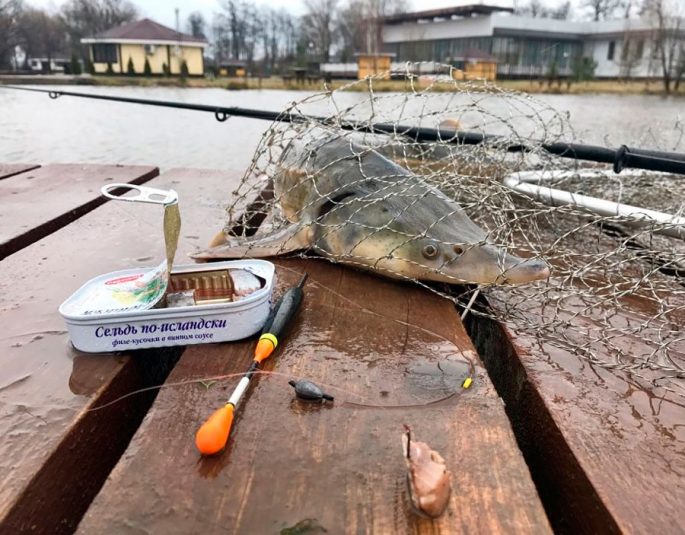
Immediately after spawning, when the fish goes to shallow water, the most convenient tackle is the usual float fishing rod. When a fish wants to eat, it greedily swallows a hook with a nozzle. In such conditions, it is undesirable not to leave the fishing rod unattended. It is very important to have a special tool with you that would allow you to remove the hook without injury to the fish. This is due to the fact that the fish may be of such size that it will have to be released back into the water element.
It is good and pleasant to catch a sterlet with a bait, if another fish does not interfere with this process.
O se manatu taua! To prevent small fish from biting, large bait should be placed on the hook. If you use bait, then a variety of fish will gather on the feed table, which can interfere with the normal process of fishing. In this case, it is during this period that it is better to do without bait.
Fishing on small rivers
Small rivers have their own subtleties of fishing, because here you can stay with a big catch, using all sorts of tackle that is not included in the category of poachers. For example, it is possible to use a drag. The meaning of fishing is as follows: two anglers are located on opposite banks of the river. In their hands they hold rods, which are connected to each other with the help of a fishing line, on which leashes with weights and hooks are attached. In order for the fish to react to baited hooks, anglers need to move in the same direction simultaneously. As a result, the hooks will slide on the surface of the water. This type of fishing is most effective at the beginning of summer, when there are many insects on the surface of the water and fish feed from the surface.
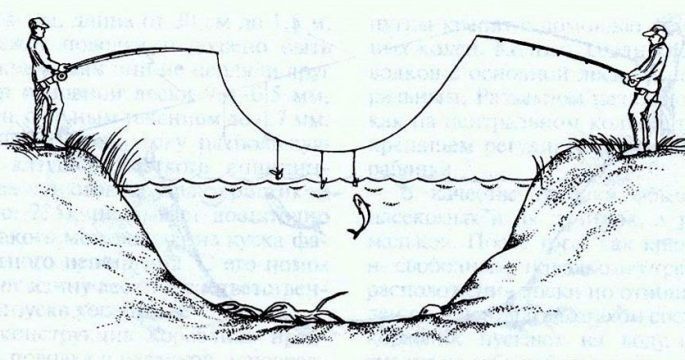
Trawling
Naturally, it is difficult for one angler to use such tackle, although nothing is impossible. The second angler can be replaced by an ordinary stake driven into the ground on the opposite bank. For greater reliability, the fishing line can be connected to the opposite side with the inclusion of a reliable elastic band. It will allow you to depreciate in cases where a very large specimen is caught.
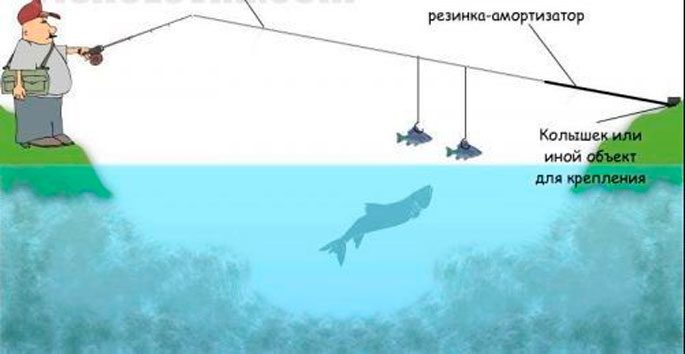
Single constriction
A line is considered a similar type of equipment, although this tackle is included in the category of poachers and fishing with a line is prohibited. The fact is that there are a lot of leashes with hooks on the line and the fish is often caught not because it is interested in the bait, but because it clings to the hooks with its body parts. Despite this, many still use the line, with the hope of catching fish due to the large number of leashes with hooks.
Pu'eina Sterlids i luga o Zakydushki | Pu'eina Sterlids i Rucheinyka | 1080p | “BF”-Leai. 41
Pu'eina sterlet i le pito i lalo
Bottom tackle, depending on the regions, has significant differences, although the principle of fishing remains the same. Nowadays, this type of tackle has received the status of the most popular.
Zakidushka is one of the varieties of donkey. Our ancestors also used similar methods of fishing, so over a long period of time, the snack has not undergone significant changes. A heavy sinker is fixed at one end of the fishing rod, the weight of which depends on factors such as:
- Depths.
- The presence and speed of the current.
- The weight of the bait along with the hook.
- Line thickness.
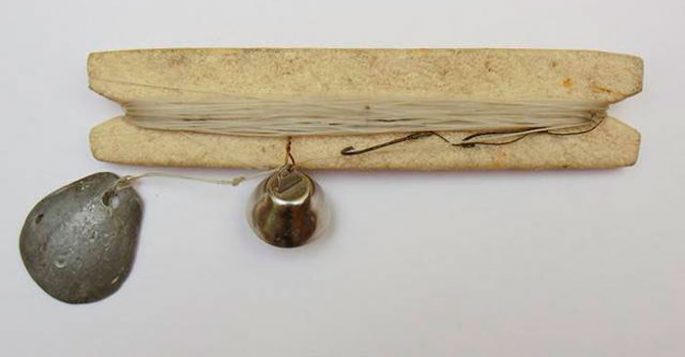
Zakidushka – compact tackle, does not require a rod
One or more hooks are attached to the sinker. Suitable bait for catching sterlet is planted on them. The fishing rod is thrown into the water and after the sinker is at the bottom, the second end of the tackle is fixed on the shore. To fix bites, a small stick is attached to a stretched fishing line. At the time of the bite, the stick begins to vibrate, indicating that you need to hook.
Naturally, the bait is considered to be a fairly simple tackle and with its help it is quite problematic to cast the bait far, especially since there is no rod blank in the zakidka. This is a simple, compact tackle that is on the reel. Nowadays, anglers use other bottom gear equipped with powerful rods. Such gear is more effective, and it is permissible to cast the bait over a considerable distance. The bite signaling device can be the tip of the rod itself or a bite signaling device, including an electronic one. Another advantage of such equipment is the ability to attach a small feeder and throw it along with the nozzle. This allows you to lure the fish to the fishing point, regardless of where it is in the reservoir.
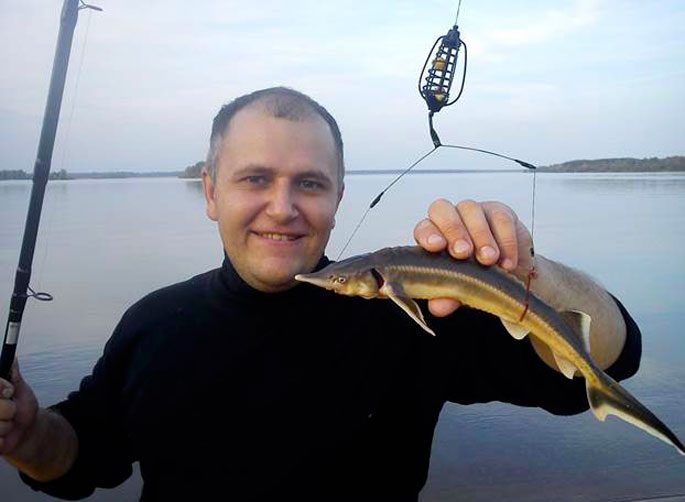
The task of the angler is also to find a promising place. If you use an echo sounder, the task is greatly simplified. There is a deep place (pit), from which there is always an exit to a shallower place with a sandy or rocky bottom. This type of bottom is vital for sterlet, but the presence of snags or underwater vegetation indicates that there is no such fish here. The sterlet enters such areas of the water area only in spring, after spawning.
After you have found a place for fishing, you should prepare bait, and quite simple. To do this, a worm (a lot of worms) is taken and cut into small components with a special tool. Then the chopped worm is mixed with river sand, which is abundant in the fishing area.
There should be large cells in the feeder so that the bait can be washed out. It should be taken into account the fact that the faster the current, the faster the bait is washed out of the feeder.
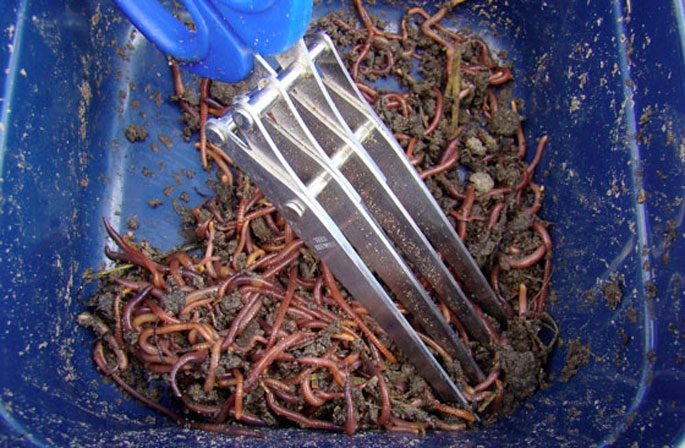
Worm cutting tools
Catching sterlet on feeder tackle is a rather exciting type of fishing, so it is not in vain that it is very popular these days. The fact is that feeder, modern tackle is high-tech equipment, and quite durable and reliable. What a feeder rod is worth: it is strong and flexible, allowing you to cope with big fish. In addition, the sterlet is considered a very strong fish, so if caught, a large dose of adrenaline and a lot of effort for the fisherman are simply provided. If we talk about large individuals, then you will have to try hard to pull such a fish out of the water, especially since it will resist for a long time before it appears near the shore.
Nowadays, it is not problematic to find any tackle for yourself, depending on the conditions of fishing. Feeder rods are also produced for fishing from a boat, and not just from the shore. Using the excellent characteristics of gear, you can make a long cast and fish at a considerable distance from the shore. Fishing from a boat allows you to catch the most inaccessible areas. You can make the process more productive if you feed a promising place in advance. This can be done in the daytime, then at night you can catch a very large specimen without any problems. Moreover, you can count on the capture of other fish, such as bream, for example, which loves worms just like sterlet. As a rule, these fish do not interfere with each other, being nearby on a baited place.
Sterlet fishing allows you to provide your family with very tasty fish, and in any form. This is doubly important also because such a fish is not sold in the store. There are a lot of sterlet hunters in our time, so you should not tell anyone about your promising places, especially those who prefer to catch this fish with prohibited fishing gear.
I have never seen such a sterlet before.. Catching a sterlet on donkeys.
Useful properties of sterlet
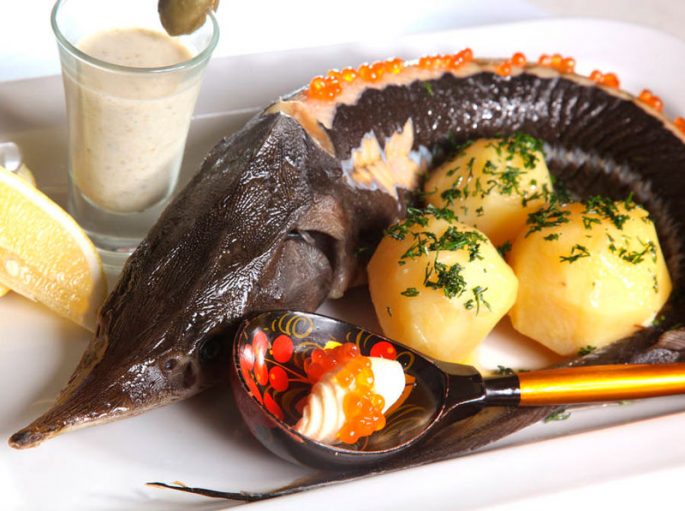
The sterlet represents the sturgeon family and is the smallest fish of this family, growing in length no more than 1,2 meters and weighing up to 15 kilograms. As a rule, the average size of a sterlet is within 60 cm and the fish weighs about 2 kilograms. Under natural conditions, sterlet can interbreed with sturgeon and stellate sturgeon. As a result, a mixture is born, which is called sturgeon and sturgeon spikes.
Sterlet is widely used in cooking for preparing a variety of dishes. In the recent past, this fish was called “royal” because it was always present on the table of monarchs and other nobility. Sterlet ear, with the addition of champagne, is considered a classic dish. In addition to fish soup, various main dishes are prepared from sterlet. In this case, various cooking technologies are used.
Sterlet, like other members of the family, is characterized by the presence of polyunsaturated fatty acids in the meat, such as Omega-3 and Omega-6. Such components have a positive effect on the metabolic process, reduce the risk of heart attack, and fight malignant neoplasms. In addition, fish meat contains a wide variety of vitamins and minerals.
The calorie content of this fish is only 88 kcal per 100 grams. We can safely say that this is a dietary product that will help get rid of excess weight, not to mention weight gain. Unfortunately, not everyone can eat this fish. This fish should not be eaten by those who have problems with the pancreas, as well as those whose body does not accept seafood. Fortunately, there are not so many such people.
Catching red fish. Catching sterlets on zakydushki. Sterlet on fry.










